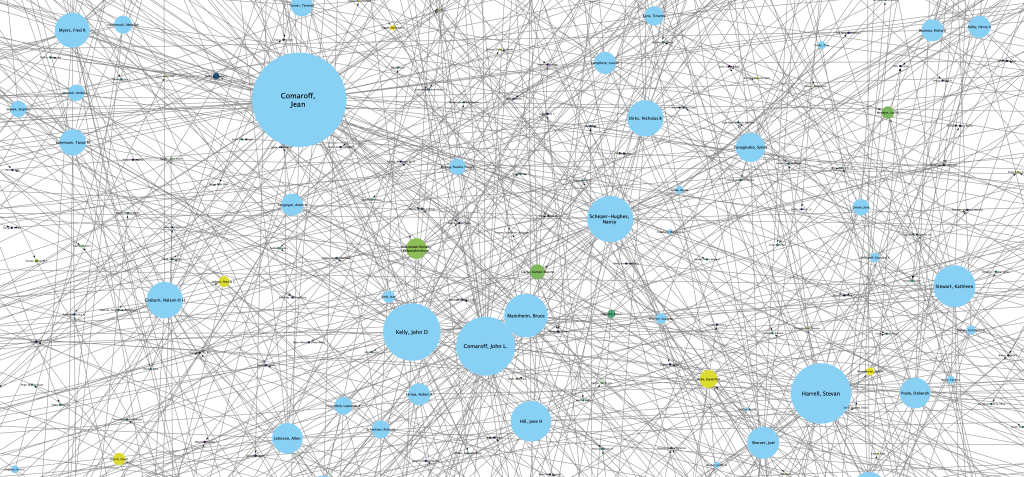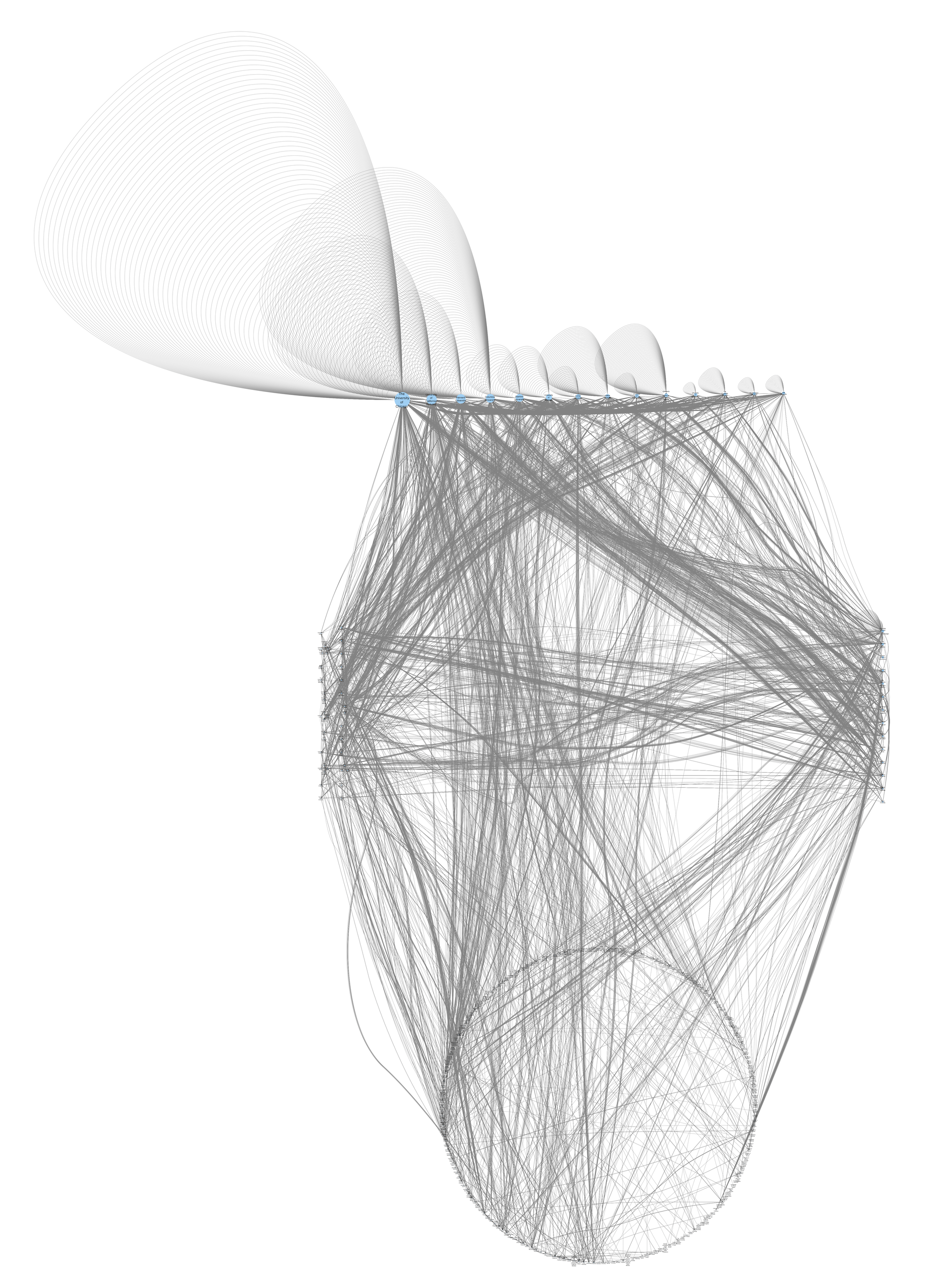This is a follow-up to my earlier post “How to approach a research proposal: Writing Questions.” In that entry, I laid out a dynamic hierarchy of questions—conceptual questions, research questions, and field questions—which define the logical structure of a research proposal. They also begin to establish the scholarly contribution and the intellectual context of a research project. Below, I’ll be drawing on the question types I introduced in my earlier post.
The first few pages of a research proposal will be devoted to introducing and explaining your research questions, and introducing or at least suggesting your conceptual and field questions.
After the research proposal has done this, it must spend some time explaining what those questions are about, and the broader empirical and academic context in which the proposal is asking those questions. These things are done in the literature review.
A literature review is a scoping exercise that draws together the scholarship relevant to your project in order to contextualize your questions, by synthesizing the most important related studies in your field. As a proposal writer, it is your job to help your reader understand why anyone would ask the questions you are asking and to show them that (a) these questions are relevant and (b) answerable in the ways you are proposing to answer them. The literature shows us this in relation to the scholarship that has gone before yours. (Thanks to my colleague Eli Elinoff for this articulation.)
There is a whole process to putting together a literature review, but I’m going to limit what I say below to the basic functions of a literature review section in a research proposal.
What the Literature Review is not
Less experienced students often labor under misconceptions of what a literature review in a proposal is, and teachers often assume that students will know what a literature review is without much explicit guidance. So let’s address some common misconceptions.
A literature review is not a record of the things that you have read in preparing your proposal. Students will sometimes write a literature review as though they are providing proof that they have read a sufficient number of books and articles related to their research topic. This tends to lead to pieces of writing that list and summarize some number of sources, without making any strong or clear claims about any of them. But just as most other pieces of academic writing, a literature review must have an argument about the literature that is novel in some respect. (In the case of a research proposal, the argument of a literature review will be about how certain sources or groups of sources inform and justify the proposal’s questions and research plan.)
A literature review is not exhaustive. Just as a research project cannot be about every single thing of any possible relevance, a literature review in a proposal cannot be about every single source of any possible relevance. It must represent a careful and considered selection of the most relevant ones. In preparing for a literature review, you will want to be as exhaustive as possible, but in the actual written product, you must make choices about what belongs and what can be left out. These selections should be informed by the arguments that the literature review is trying to make, and therefore the questions at the center of the proposal.
A literature review is not a book review. In a book review, the purpose is to assess the merits and shortcomings of a book or other piece of academic writing on a wide range of criteria—for example, quality of the argument or data, clarity of writing, significance of contribution to an important debate or discussion, and so on. The use of books and other sources in a literature review must be both more limited and more sharply focused. Each individual source should only be discussed to the extent required to establish its relevance to the literature review’s argument.
Relatedly, a literature review is not a place to state your personal opinions about a book or article. You should not say whether you did or didn’t like a book. This is the wrong framework to use to explain its value in a literature review, because the point of a literature review is to situate sources in relation to each other and, ultimately, to your own research project. When you express a like/dislike opinion about a book, you show the reader that you are only situating it in relation to yourself.
The Functions of a Literature Review
At times, a literature review may be required to do one or more of the above things. Some departments may require broader “surveys of the literature” as part of a Ph.D. proposal, but in many cases, a more focused text is desirable. In my view, a literature review should perform four main functions. As I’ll explain, some of these functions will be addressed in part in other sections of a proposal, but can also be included in a literature review.
The first function of a literature review is to establish that your project and questions are likely to be successful and lead to interesting insights. It does this by explaining how, given similar conceptual questions and empirical foci, other anthropologists or academics have posed and answered their own research questions. Some of these research questions and projects will be similar to yours. By explaining the significance of the work of these adjacent scholars, the literature review can establish an academic justification for your own research project. This is your “academic” or “scholarly contribution.” It is also the main argument of your literature review.
Through your selection of these adjacent scholars, the literature review also fulfills a second function, which is to communicate the relevant intellectual context of your research to the reader. For any given conceptual question, you can probably imagine many different scholars asking all kinds of research questions and answering them through a great range of projects. Your literature review will show which subset of these scholars have similar questions, hypotheses, and methods to you. This is what an anthropologist wants to know, when they ask which scholars you are “in conversation with.”
The third function of a literature review is to show how your research is “in conversation” with these adjacent scholars. In anthropology, it will be rare you will do exactly the same project as another anthropologist has done in the past—it will differ in terms of method, theory, or field site. This means that you must explain the relationships between your work and the work of others. This is usually done by introducing a set of contrasts and similarities.
For instance, your project may have similar research questions but explore them in a new field site. This is “empirical novelty”, that is, what makes your work new or unique is that it is about a place or situation that nobody has looked at before: “Anthropologists have studied burial practices in places X and Y, but nobody knows what they are in Z.”
Or, your project may have different research questions in a similar field site, that is, it explores a new relationship in a known field site: “Anthropologists 1, 2, and 3 have understood ceremony A in place X to be a rite of passage, but following 4, 5, and 6, I ask how these ceremonies may be related neoliberalization.”
In most cases, you should have a bit of literature speaking to both sides of the novelty/similarity contrast: “Anthropologist 1, 2, and 3 have argued that ceremony Y in place X is a rite of passage that ensures the continuity of gerontocratic society. However, anthropologists 4, 5, and 6 have shown that ceremonies similar to A in places Y and Z are also linked to neoliberalization.”
By doing this, you also provide justification for your own hypothesis. If your research project is about showing that ceremony A is linked to neoliberalization, then being able to show that others have shown this link for similar ceremonies helps justify the importance of your own research, and show that other academics are going to see the value of your work.
The fourth function of a literature review is to bring clarity to important terms. If you’ve stated that 1, 2, and 3 argue that a certain type of ceremony is linked to neoliberalization, then you should explain how they define “neoliberalization,” as well as “ceremony.” What phenomena constitute neoliberalization in their view? What other authors do they draw on to formulate their definition? What alternative definitions are there, and why is theirs more useful?
The literature review may also be where you explain key terms from the field: who and what are the “who” and “what” of your research questions? Some of this may take place in a different section, but in any case, you will need to explain somewhere how you define a particular community, and something about their history as a community, and introduce how other scholars have defined and studied that community. You might also add your own preliminary or past research here. The point is to provide whatever a reader who is informed about anthropology but may be naive about your particular interests what they need to know in order to understand what you want to do.
Scoping
It’s important to note that, throughout this, we’ve been talking about connections between your proposal and the existing literature that are made at the level of research question. In most cases, your literature review should not bring in sources that only speak to your work at the conceptual level. You do not need to introduce sources that show how anthropologists have long been interested in social structure, or the diversity of cultures. They should address the levels of research question. This is provided that the reader is someone reasonably familiar with anthropology. If you are writing a proposal that will be read by a person in a completely different field, or outside of university research, then you may want to include such a statement, but only if you judge that your audience really needs it.
(You may discuss things in your literature review at the level of field questions, but these are usually best saved for the methodology section, which I will address in a future post.)
To say just one thing about the process of composing a literature review: The four functions of a literature review can be used as questions that you ask of the things you read, in light of your conceptual and research questions, and which allow you to rewrite your questions or modify or clarify the scope of your research project.
The functions, restated as broad questions are:
- What is the academic value of my project and the work of others in my area of research?
- Who are the scholars doing work most relevant to my project, and what do they say?
- What makes my research similar or different to their work?
- What key terms are most useful and effective for communicating my research and my ideas?
Ending your literature review
If your literature review fulfills these four functions, then it should allow you to arrive at a concluding sentiment in your literature review, which should be something like “Therefore, I will study ceremony Y in place X in order to understand its links with neoliberalization.”
In this way, a good literature review is like an essay within an essay. It shows, based on a careful and deliberate selection of relevant sources, how you position your research in relation to what others have done, and to explain the value of your work within that intellectual context. The rest of your proposal can then move on to the how of your research.


